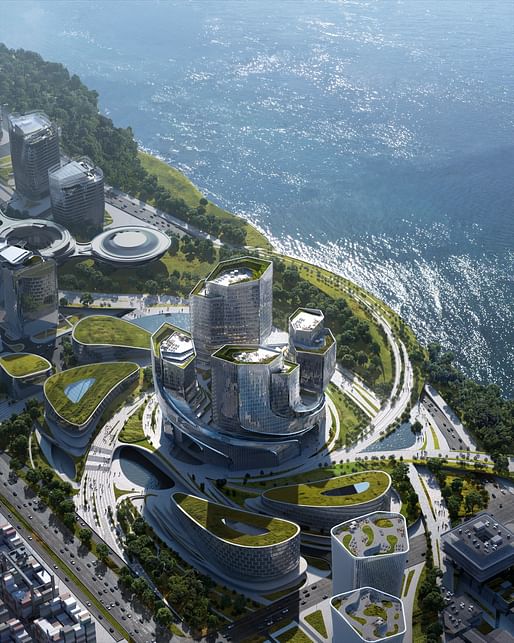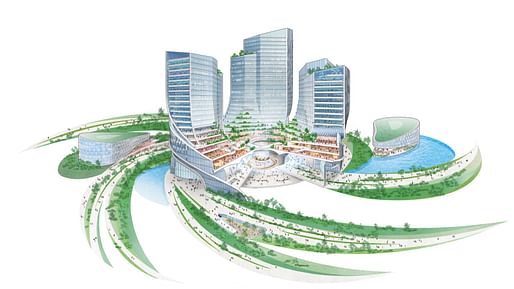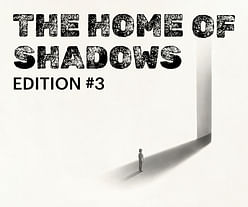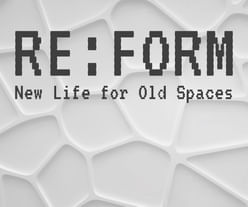
Büro Ole Scheeren has won a competition for the design of Tencent’s global headquarters in Shenzhen. Having been awarded the commission, Scheeren saw off competition from practices including Herzog & de Meuron, Heatherwick Studio, Bjarke Ingels Group, Snøhetta, OMA, Kengo Kuma, Zaha Hadid Architects, and Foster + Partners.

The new headquarters for Tencent, creators of the popular Chinese application WeChat, will occupy a 14-hectare site in the city’s Qianhai Bay. Schreeren’s scheme, titled ‘Tencent Helix,’ is intended to be “both a cohesive singular whole and a collection of distinct elements.” At approximately 5.4 million square feet, the campus will be almost twice the size of Apple Park.

“Tencent has a vision for the role of technology as a multi-dimensional system of sustainable values for society,” said Ole Scheeren about the scheme. “Our design for the new headquarters reflects the same values, converging technology with the needs of people and society in a multi-dimensional construct of space and social integration.”

The winning scheme sees a “swirling structure” ascending upwards to form four towers, seeking to symbolize the company’s historic growth. Beneath the towers, a network of pedestrian pathways extends to connect with the surrounding Dachanwan Island neighborhood.

At the core of the scheme is a so-called ‘Vortex Incubator,’ described by the team as the “collective heart of the HQ” and connecting the four office towers. The hub will host an academy, recreational spaces, a health club, a conference center, and collaborative offices.

From the hub, a series of “spiraling rays” extends downwards to form a grand lobby. Adjacent to the lobby, an ‘Urban Forum’ will contain a range of publicly-facing restaurants, retail, public amenities, and cultural spaces.

The four towers will accommodate Tencent’s 23,000-strong workforce, and are designed to “provide a rich variety of spatial typologies with a range of customizable floor plates.” Surrounding the four towers and central incubator space, five standalone ‘wings’ emerge from the landscape to provide additional flexible space for the company.

Outside, the facade is formed of modular prismatic panels intended to create “visual complexity whilst flooding the interior space with daylight.” Between the towers, a system of spiraling landscape terraces forms the so-called ‘Vortex Garden’ providing recreational spaces for staff and contributing to the scheme’s passive design strategy.

“Tencent Helix is a symbol of the synergies between technology, innovation, and growth in a human-centric design,” Scheeren added. “Its well-structured social ecosystem is a testament to the evolving nature of global headquarters into a complex and interactive ensemble where functionality, sustainability, and community come together.”

The Home of Shadows / Edition #3
Register by Wed, Jan 29, 2025
Submit by Mon, Mar 3, 2025

The Last Nuclear Bomb Memorial / Edition #5
Register by Thu, Jan 16, 2025
Submit by Wed, Feb 19, 2025

Re:Form – New Life for Old Spaces
Register by Wed, Jan 22, 2025
Submit by Tue, Sep 2, 2025

MICROHOME Kingspan 2024/25
Register by Thu, Feb 13, 2025
Submit by Tue, Mar 18, 2025
No Comments